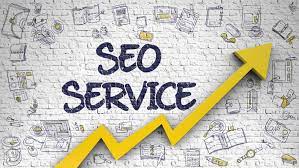
In today’s digital world, business SEO has become a critical part of any successful marketing strategy. Whether you’re a small startup or a well-established company, having a strong online presence is key to growing your business. By implementing effective SEO techniques, you can increase your brand’s visibility, attract more potential customers, and ultimately boost your revenue. Here’s a detailed look at proven SEO strategies that can elevate your brand and take your business to new heights.
What is Business SEO?
business SEO refers to the process of optimizing your website and online content to improve its visibility on search engine results pages (SERPs). The goal is to make your website rank higher in search engines like Google, so that potential customers can easily find your business when they search for relevant keywords.
SEO is not just about improving rankings but also about enhancing the user experience on your site, making it more accessible, informative, and engaging for your audience.
1. Keyword Research: The Foundation of Business SEO
One of the most crucial steps in any business SEO strategy is keyword research. By identifying the terms and phrases your target audience is searching for, you can create content that speaks directly to their needs.
- Focus on Long-Tail Keywords: These are more specific phrases that tend to have lower competition but higher conversion rates. For example, instead of targeting a broad keyword like “SEO,” focus on long-tail keywords such as “affordable business SEO packages in South Africa” to attract more qualified leads.
- Use Keyword Tools: Leverage tools like Google Keyword Planner, SEMrush, or Ahrefs to find the best keywords for your business. This helps you identify search volume, competition, and related terms.
2. On-Page SEO: Optimizing Website Content
Once you have your target keywords, it’s time to optimize your website’s content. On-page SEO ensures that search engines can understand your content and rank it accordingly. Here are a few essential on-page SEO practices to follow:
- Title Tags and Meta Descriptions: These are the first things users see on search engine results pages. Make sure your title tags include primary keywords and are compelling to encourage clicks. Write concise and engaging meta descriptions that summarize the page content.
- Header Tags: Organize your content using header tags (H1, H2, H3) to make it more readable. Ensure your primary keyword is included in your H1 tag, while secondary keywords can go into H2 or H3 tags.
- Content Optimization: Create high-quality, informative content that answers your audience’s questions. Use keywords naturally and avoid keyword stuffing, which can negatively affect your rankings. Focus on providing value.
3. Technical SEO: Enhancing Your Website’s Performance
Technical SEO is the backbone of a well-optimized website. It deals with the underlying structure of your website and ensures search engines can crawl and index your pages efficiently. Some key elements of technical SEO include:
- Mobile Optimization: With more users browsing on mobile devices, it’s essential that your website is mobile-friendly. Google prioritizes mobile-optimized websites in its rankings, so use responsive design to ensure your site adapts to different screen sizes.
- Site Speed: A slow-loading website can harm your rankings and drive users away. Use tools like Google PageSpeed Insights to test your website’s speed and make necessary improvements.
- XML Sitemap: An XML sitemap helps search engines crawl and index your website’s pages. Make sure it’s submitted to Google Search Console and other search engines.
- Secure Website (HTTPS): Google gives preference to secure websites, so make sure your site is HTTPS-enabled. This not only improves your rankings but also builds trust with your visitors.
4. Content Marketing: Create Engaging and Valuable Content
Content marketing is one of the most effective ways to boost your business SEO efforts. By creating high-quality, informative, and engaging content, you can drive organic traffic to your website and keep users engaged. Here are some content ideas to consider:
- Blog Posts: Regularly publish blog posts that provide value to your audience. These can be tutorials, how-to guides, industry news, or case studies. Be sure to incorporate your target keywords.
- Videos: Video content is increasingly popular, and it’s an excellent way to improve engagement. You can create product demos, explainer videos, or even customer testimonials.
- Infographics: Infographics are shareable and easy to understand. They’re a great way to present data, processes, or key information in a visually appealing format.
- E-books and Whitepapers: Offer in-depth resources in exchange for contact information to build your email list and generate leads.
5. Link Building: Improve Your Domain Authority
Link building is another critical component of business SEO. Search engines use backlinks to determine your website’s authority and trustworthiness. The more high-quality backlinks you have, the higher your site will rank in search results. Here’s how to improve your link-building strategy:
- Guest Blogging: Write guest posts for reputable websites in your industry. This not only helps build backlinks but also establishes you as an authority in your field.
- Broken Link Building: Find broken links on other websites in your industry and offer your own content as a replacement. This is a win-win situation where you help website owners fix broken links while gaining a valuable backlink.
- Create Shareable Content: The more valuable and engaging your content is, the more likely it will be shared by others. The more shares you get, the more backlinks you’ll generate.
6. Local SEO: Targeting Your Local Audience
If you run a local business, local SEO is essential. This technique focuses on optimizing your website for location-based searches, helping you attract customers in your area. Here’s how to improve your local SEO:
- Google My Business: Set up and optimize your Google My Business profile. This is one of the most effective ways to appear in local search results and Google Maps.
- Local Listings: Ensure your business is listed on relevant local directories and review sites like Yelp, Yellow Pages, and local Chamber of Commerce websites.
- Local Keywords: Use location-based keywords in your content and metadata. For example, instead of just targeting “business SEO,” target “business SEO in Cape Town” to attract customers in that region.
7. Track and Measure Results
No SEO strategy is complete without tracking and measuring results. Use tools like Google Analytics and Google Search Console to monitor your website’s performance. Analyze metrics such as organic traffic, bounce rate, conversion rate, and keyword rankings. This will help you understand which SEO efforts are working and which need improvement.
Conclusion: Choose the Right SEO Package for Your Business
By implementing these proven business SEO techniques, you can significantly improve your website’s visibility, attract more visitors, and convert them into loyal customers. At Webluno, we offer result-driven SEO packages that are tailored to suit businesses of all sizes and budgets. Whether you’re just starting out or looking to enhance your current SEO strategy, we have the perfect solution for you.
Explore our SEO Packages and start boosting your online visibility today. Don’t wait—elevate your brand and grow your business with effective SEO strategies!





